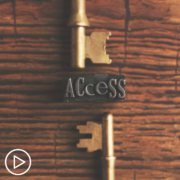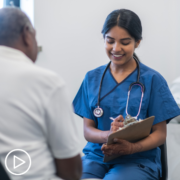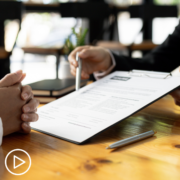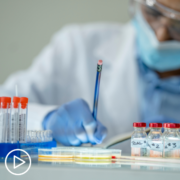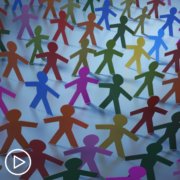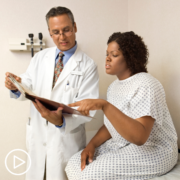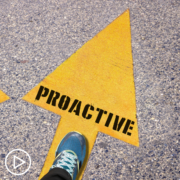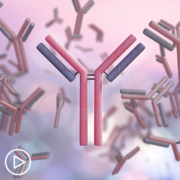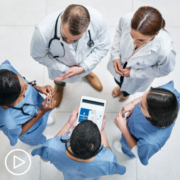Advice for Setting Myeloma Treatment Goals and Collaborating on Care Decisions
Advice for Setting Myeloma Treatment Goals and Collaborating on Care Decisions from Patient Empowerment Network on Vimeo.
This animated video defines common myeloma treatment goals, provides an overview of available myeloma therapies, and includes advice for making care decisions and the importance of being your own advocate.
See More from Collaborate Myeloma
Related Resources:
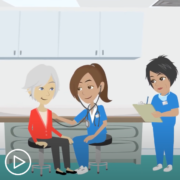
|
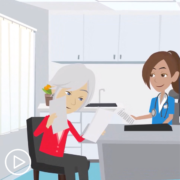
Understanding Myeloma | How You Can Collaborate in Your Care |
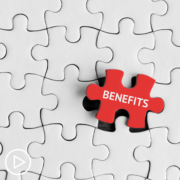
|
Transcript:
Bianca:
Hi! I’m Bianca, a nurse specializing in myeloma. In this video, we’ll discuss myeloma therapy and explain how to work with your healthcare team so that you can choose a care plan best suited for YOUR myeloma.
I’d also like to introduce you to Suzanne. Suzanne is a patient advocate living with myeloma.
Suzanne:
Thanks, Bianca. I’m happy to share my own experience and to talk about how I worked with my healthcare team to decide on a care plan.
When my doctor and I were first considering my options, we started by setting treatment goals. Bianca, can you define treatment goals?
Bianca:
Sure! Each patient is unique, so it may vary by person. You should collaborate WITH your healthcare team to determine YOUR treatment goals. Common goals of myeloma treatment may include:
- Reducing and managing your symptoms.
- Slowing the progression of the disease.
- Inducing remission.
- And, helping you live longer while maintaining quality of life.
Suzanne:
Thanks for explaining this. When I discussed treatment goals with my doctor, I pointed out that I still wanted to be able to play pickleball with my friends, and to care for my young grandchildren. We reviewed options that could allow me to stay as active as possible and manage my myeloma at the same time.
Bianca:
That’s a great point, Suzanne. It’s also important to remember that your treatment goals can change throughout the course of your myeloma. Discuss them regularly, not just with your care team but also your care partner – that can be a family member or even a close friend.
Suzanne:
That’s right. I discussed my care with my husband AND my adult children – it’s important to keep your support team in the loop.
And it’s also essential to understand the treatment options available to you. Bianca, what are the types of therapy available to treat myeloma?
Bianca:
There are a number of different classes of therapy, which include:
- Proteasome inhibitors;
- Immunomodulatory therapies or IMiDs;
- Monoclonal antibodies;
- Stem cell transplants;
- There are also the new and recently approved therapies such as bispecific antibodies and CAR (Chimeric Antigen Receptor) T-cell therapy;
- And, of course, clinical trials.
Clinical trials can be a good option for patients at any stage of disease, often giving patients early access to a viable and cutting-edge therapy. When considering treatment, you should ask your doctor if there is a clinical trial that may be right for you.
Suzanne:
Good point! When I was deciding on a therapy, my doctor and I, along with my husband, discussed the risks and benefits of each approach as well as the potential outcome of each option. My doctor also walked through the clinical trials that were available to me.
Bianca, given all of the options, how do you decide which therapy is appropriate for a particular patient?
Bianca:
That’s a great question. As mentioned in our previous video, results of in-depth testing, which determine if a patient has low-risk or high-risk myeloma, can affect your choices. Other factors that impact treatment decisions may include:
- Your age, overall health, and any pre-existing conditions.
- Potential side effects of the treatment.
- Previous therapies that may have been used to treat your myeloma.
- The financial impact of a treatment plan.
- And the patient’s lifestyle and preference.
Suzanne:
That’s right. And, you shouldn’t hesitate to weigh in on what YOUR preference is. Do your own research so you understand each treatment approach, then work WITH your healthcare team to determine what might be best for you.
Bianca:
That’s excellent advice, Suzanne. So, when making treatment decisions, you should:
- Work with your healthcare team to understand your treatment goals.
- Talk with your doctor about all available treatment options.
- And, inquire about any clinical trials that may be right for you.
- Then, discuss the pros and cons of each option.
- Bring a care partner with you to appointments and take time post-visit to discuss the proposed plan and treatment options.
- And, always remember that you have a voice in your care. Speak up and ask questions. You are your own best advocate.
Suzanne:
Great advice, Bianca. Don’t forget to visit powerfulpatients.org/myeloma to learn more. Thank you for joining us!

